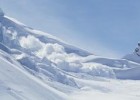Cargando...
Recursos educativos
-
Nivel educativo
-
Competencias
-
Tipología
-
Idioma
-
Tipo de medio
-
Tipo de actividad
-
Destinatarios
-
Tipo de audiencia
-
Creador
-

Answer. The Earth's crust 1.4
EduBook Organización
- 1785 visitas
What are the most abundant geochemical elements? Where are the found?
-

Unit 7: Energy inside the Earth
EduBook Organización
- 1764 visitas
Ash (n): the fine grey or black powder that is left after something has burned. It is one of the materials ejected when a volcano erupts. basalt (n): a type of black volcanic rock. bomb (n): a large…
-

The Earth's satellite: the Moon
EduBook Organización
- 1775 visitas
3.1. General characteristics of the moon The Moon is the only natural satellite of the Earth. It is 49 times smaller than our planet. As the Moon does not have an atmosphere, the Sun's rays and the…
-

Answer. The Earth's satellite 04
EduBook Organización
- 1756 visitas
What are the four phases of the Moon? What is a lunar month?
-

BBC Earth - Natural Disasters - facts, videos & pictures
V&V Books Vicens Vives Organización
- 1780 visitas
Watch BBC video clips that delve into and explain the science behind different types of natural disasters such as volcanoes, earthquakes and tsunamis.
-

Answer. Moon, Earth and Sun 03
EduBook Organización
- 1694 visitas
Why, when it is summer at the North Pole, it is winter at the South Pole?
-

Evaluation 6 - The Earth's relief
EduBook Organización
- 1702 visitas
What is the main characteristic of the American coastline?
-

Earth 100 Million Years From Now
Oriol Guinart Berrueco Docente
- 1 lo usan
- 1256 visitas
Earth's landmasses were not always what they are today. Continents formed as Earth's crustal plates shifted and collided over long periods of time. This vide...
-

The Earth's climate zones
EduBook Organización
- 1637 visitas
Near the Equator, the Sun's rays hit the Earth's surface directly, so places near the Equator are usually hot. Further away from the Equator, the Sun's rays hit the Earth's surface less…
-

Complete. The Earth's mantle
EduBook Organización
- 1621 visitas
Look at the picture and answer the questions. Say where the deepest magma is formed. Where on the surface does the hottest magma rise up?
Te estamos redirigiendo a la ficha del libro...












